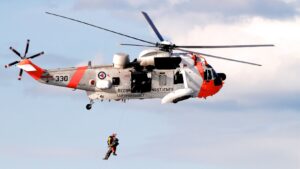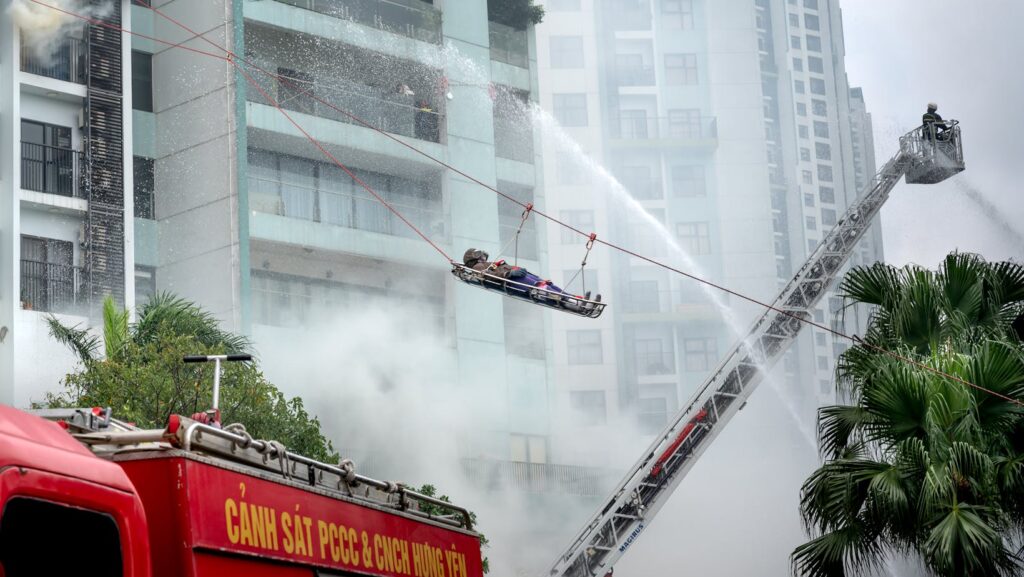In the face of disaster, every second counts. That’s where rescue tech comes in, a rapidly advancing field that’s redefining disaster response and saving lives.
Rescue Tech
 Embarking on a journey to delve deeper into the realm of ‘rescue tech,’ it becomes crucial to understand its constituents and implications.
Embarking on a journey to delve deeper into the realm of ‘rescue tech,’ it becomes crucial to understand its constituents and implications.
Rescue Tech, in layman’s terms, refers to any technology aimed at assisting in disaster response and recovery. It’s a broad umbrella that encompasses a variety of digital solutions designed to enhance the speed and efficacy of emergency interventions. Think of devices like Unmanned Aerial Vehicles (UAVs), for instance. These are commonly used in search and rescue missions, they offer a bird’s-eye view of affected areas, which aids in locating survivors in difficult terrain.
There isn’t a one-size-fits-all blueprint for rescue tech, given its inherent versatility. However, some fundamental components are shared across various applications. First, there’s the hardware, the physical devices utilized in rescue operations.
Current State of Rescue Tech
Overview of Modern Rescue Technologies
 Modern rescue technologies encompass a wide array of devices and applications, each designed to address unique challenges in disaster management. Drones and robots underpin many operations, traversing precarious terrains or collapsing structures, to locate survivors and analyze risks. Advanced software applications facilitate efficient data management, turning huge volumes of captured information into actionable intelligence.
Modern rescue technologies encompass a wide array of devices and applications, each designed to address unique challenges in disaster management. Drones and robots underpin many operations, traversing precarious terrains or collapsing structures, to locate survivors and analyze risks. Advanced software applications facilitate efficient data management, turning huge volumes of captured information into actionable intelligence.
Robotic exoskeletons, another state-of-the-art rescue tech, allow operators to lift heavy debris with ease, potentially unearthing survivors swiftly and safely. High-frequency location systems, superior to traditional GPS, can pinpoint victims trapped in obstructed areas. Further, innovative communication solutions counteract common network disruptions following disasters, ensuring uninterrupted coordination amid high-stress scenarios.
Case Studies: Rescue Tech Saving Lives
The impact of rescue tech is perhaps most profound when illustrated by real-life instances. The 2015 Nepal earthquake serves as a testament to the power of this technology. Drones were deployed within hours of the calamity, mapping the affected regions extensively. This aerial data, when converted into 3D models, helped responders prioritize their efforts strategically, resulting in more lives saved.
In another instance, during the 2018 Thai cave rescue, divers used handheld sonar devices for navigation in murky waters. Quietly echoing sound waves, these devices painted a 3D picture of the surroundings, guiding divers safely to the trapped football team.
Future Directions in Rescue Tech
Emerging Trends and Innovations
Innovation remains a key driver in rescue tech, with transformative advancements on the horizon. Broadly speaking, four areas promise significant strides: Artificial intelligence (AI), 3D mapping, Virtual Reality (VR), and bio-sensing technologies.
AI stands poised to redefine disaster response. For example, the use of AI in interpreting drone-collected data enables quicker identification of disaster-prone areas, potentially facilitating prompter response times. Similarly, 3D mapping technologies, incorporating geospatial data and AI, lead to improved risk assessment, more detailed mapping, and better navigation in disaster-affected zones.
VR also holds potential. By simulating realistic disaster scenarios, VR can provide advanced training for first responders, thereby sharpening their skills for real-world crises. Finally, recall the concept of bio-sensing technologies.
Challenges and Opportunities Ahead
 As promising as these innovations are, rescue tech also faces challenges. For instance, the lack of standardization in equipment and methods, limited interoperability, and the need for heavy investment in infrastructure pose substantive hurdles.
As promising as these innovations are, rescue tech also faces challenges. For instance, the lack of standardization in equipment and methods, limited interoperability, and the need for heavy investment in infrastructure pose substantive hurdles.
That’s not all. Implementing advanced technologies also requires well-trained human resources, necessitating concerted efforts in education and knowledge dissemination. Furthermore, ethical, legal, and psychological aspects of new technologies can’t be ignored, especially with AI and VR coming to the fore.
Yet, despite these challenges, abundant opportunities for growth and improvement exist within the sector. Increased collaboration among tech companies, governments, nonprofit organizations, and education institutions can propel this growth forward.
Cutting-Edge Innovations
Rescue tech transformative role in disaster response is undeniable. From drones and robotics to AI and VR, it’s a dynamic field that’s constantly evolving to save more lives and enhance humanitarian efforts. Its impact, as seen in the 2015 Nepal earthquake and the 2018 Thai cave rescue, underscores its immense potential.

